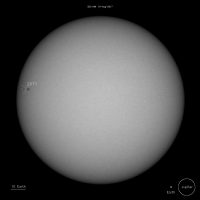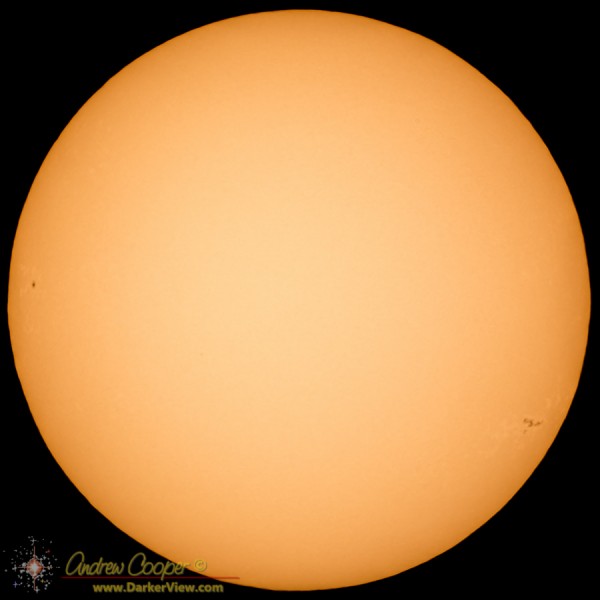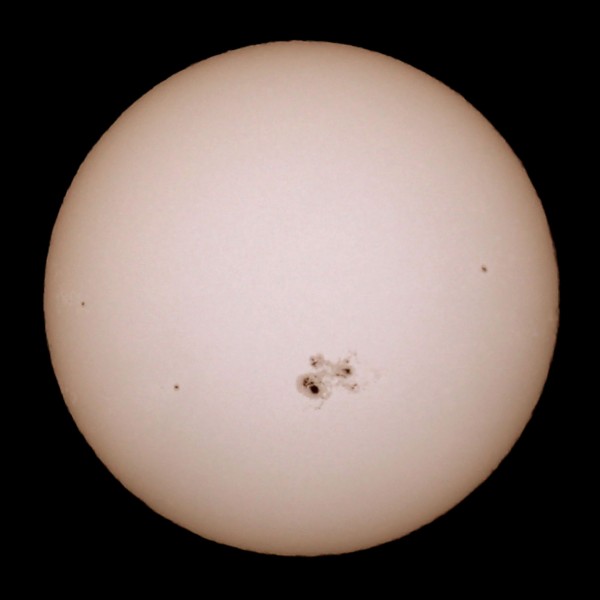Will be doing a little solar observing in the coming days…

When you want to see the stars, find someplace dark
A few days ago I looked at the solar imagery from the spacecraft and ground observatories and feared that our Sun would be completely spotless for next week’s solar eclipse. The one sunspot visible had just rotated out of view, not to return until well after the eclipse. There were no other sunspots apparent.

Sunspot group AR2671 formed on the eastern limb of the Sun over the last couple days. It has even produced a few c-class solar flares to show it has some vigor.
Better yet… This sunspot group will be a boon to eclipse photographers across the US. The pattern of dark spots will make the difficult task of focusing a telescope on the Sun far easier. These spots will provide a focus target to untold telescopes.
The only question now is will the group last for five more days? Will is grow or shrink.
What will the Sun look like when eclipse day arrives on August 21st?
Very quiet!

I observed this spot several times while training some folks at the observatory to use a solar setup and while testing my eclipse telescope.
AR2670 is now disappearing from sight as it rotates over the limb, maybe it will be back in another couple weeks for a third appearance.
Checking the SOHO image archive and the GONG farside maps shows there is nothing else, no significant solar activity that will appear before the total eclipse in eight days. Nothing hiding on the farside to rotate into sight.
There is a slim chance of something new developing over the next week. However, we are approaching solar minimum, a quiet Sun is to be expected. Indeed, I expect we will have an almost featureless solar disk on eclipse day.
Update 14 Aug 2017: With one week to go a new spot has appeared! I do not see that is has an AR designation yet, but this new spot should be in the middle of the Sun on eclipse day if it lasts for the week. It may not be big or pretty, but it will at least give everyone something to focus cameras on in preparation for the main event.
Update 15 Aug 2017: The new sunspot has been designated AR2671 and has already produced some C class flares. Looks like has the energy to develop a bit more. At least one small sunspot for the eclipse?
I still have an 8″ solar filter on-hand, leftover from the Meade LX50 I used to have many years ago. A quick inspection to insure it is in usable condition (take no chances with solar filters) and a fit check… It fits the restored C8 perfectly.
Shall we see what the Sun looks like today?

Sunspot complex AR2192 is the largest I have seen in a long time. Easily visible without a telescope, simply using appropriate eye protection. It is quite large, more than ten times the diameter of the Earth. There are reports of it being noticed at sunset.
I photographed the sunspot during lunch fron Waimea, setting up a little telescope next to my vehicle in the Keck parking lot. The photo was taken using a TV-76mm telescope, the EOS-M camera and a Baader solar film filter, the same setup I viewed the Venus transit with.
Of course there was a partial solar eclipse today, visible across western North America. Photos of this enormous sunspot and the eclipse are now being posted across the web. Unfortunately this eclipse was not visible from Hawai’i. If you have not taken a look, I urge you to step outside with your solar viewing glasses and take a quick look. You do have solar viewing glasses handy… Right?
